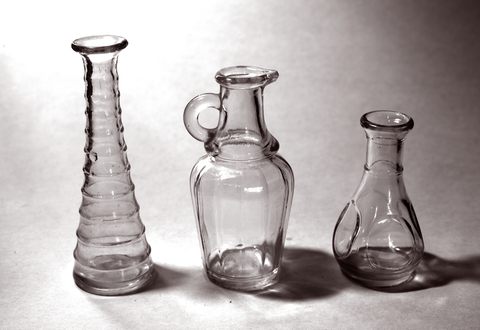
Article Contribution
Frequent flyer and supermarket loyalty schemes are two examples of systems for collecting and analyzing user behavior. They generate significant value and have evolved over a few decades to provide benefits to the customer as well as strategic and operational insights for the organizations managing the schemes. Now, there is scope to replicate their benefits in the industrial sector, through the application of Internet of Things (IoT) technologies allied to Artificial Intelligence (AI) and Digital Twin capabilities.
A Valuable Resource in IoT Data
Collections of data are frequently compared to valuable resources such as oil or, as an asset under the ownership of an individual. These analogies do not stand up to scrutiny. For example, there can be many copies of a data record whereas a barrel of oil cannot exist in more than one place at any given moment in time. In practice, it is the flow of data, from devices to applications, and the sharing of data, across operational and organizational boundaries, that is the true driver of value. This is where interoperability matters.
The IEEE defines interoperability as the ability of two or more systems or components to exchange information and to use the information that has been exchanged. This is less a technology problem and more a data management and governance issue. However, there is still a requirement to implement data management and governance policies on top of a solid foundation of remote connectivity, device management and data sourcing.
Horizontal Architecture for IoT Systems
oneM2M standards define the critical building blocks for end-to-end IoT systems. oneM2M was conceived as a middleware capability when it was launched in 2012 with the support of a several national standardization bodies. They wanted to promote a global standard that would maximize economies of scale while minimizing the drawbacks of regional fragmentation.
Through early studies of IoT use cases and their commonalities, oneM2M outlined a distributed architecture. oneM2M standards correspond to a middleware layer. This resides between a lower layer, comprising IoT devices and communications technologies, and an upper layer of IoT applications. The arrangement creates an abstraction mechanism, based on a common API, that enables a wide range of interactions between applications and the underlying technologies needed to source data from connected devices and sensors. In so doing, it makes it easier for developers to handle the complexities and technology permutations involved in IoT deployments.
Application developers can use common service functions in the oneM2M middleware layer to manage and access data from a set of associated devices regardless of the underlying technologies used by these devices. For example, devices may use different types of communication networks (e.g., Cellular, Fixed or Wi-Fi), different types of security (e.g., DTLS or TLS), different types of transport protocols (HTTP, CoAP or MQTT) and different types of content serialization formats (XML, JSON or CBOR). This arrangement permits considerable flexibility in mixing and matching component technologies to source and share IoT data. The next step is to make that data usable.
Data Modelling as a Lingua Franca
Data producers and consumers require a common understanding of how data is structured to exchange it across systems. In more ambitious scenarios, it is possible to envisage wide scale sharing of data from many sensors that are managed by different device owners and service providers. This corresponds to the concept of a data marketplace. Such a system maps onto smart city, intelligent transport, and industrial processing situations where there are multiple parties involved, all of whom stand to benefit from data sharing.

If one considers data as a resource, just like water, it is shapeless. Data modelling is like putting water into standard bottles with tags to give it anotherlevel of meaning and value. Data interoperability makes it easier for data providers to create data in a sustainable way and to exchange information with one another. Better use of exchanged data leads to more efficient services, applications, and solutions.
oneM2M Roadmap for Data Interoperability
oneM2M began work on data interoperability in Release 2 of the standard. Emphasizing the growing importance of Industrie4.0 issues, this work focused on the industrial domain. oneM2M defined a system for interworking between the industrial automation data exchange standard, OPC-UA, and oneM2M. This allows a user to understand the profile of an industrial domain object, such as an OPC UA switch or programmable logic controller (PLC), allowing oneM2M entities to discover OPC UA devices. oneM2M achieves this by defining an Interworking Proxy Entity (IPE) which provides interoperability at the syntactic level. Progress since then focuses on interworking between the OPC-UA information model and the oneM2M information model for inclusion in Release 4 of the standard.
Semantically interoperability makes it easier to exchange information between industrial systems that use OPC-UA standards and IoT systems that use oneM2M standards. This creates new opportunities for cross-domain services. For example, it becomes possible to form direct links between the smart home domain and retail or manufacturing domains.
Data Governance
Beyond the technical aspects of data interoperability, new requirements are emerging around data management and governance topics. The debate around data sovereignty raises new challenges around legal and regulatory frameworks for information exchange processes. Contractual agreements, licenses, and corporate policies define what data can be shared and integrated and how data can be shared for example. These are topics oneM2M members are addressing through ongoing technical standardization activities.

About oneM2M
 oneM2M is the global standards initiative that covers requirements, architecture, API specifications, security solutions and interoperability for Machine-to-Machine and IoT technologies. oneM2M was formed in 2012 and consists of eight of the world’s preeminent standards development organizations: ARIB (Japan), ATIS (U.S.), CCSA (China), ETSI (Europe), TIA (U.S.), TSDSI (India), TTA (Korea), and TTC (Japan), together with industry fora and consortia (GlobalPlatform) and over 200 member organizations. oneM2M specifications provide a framework to support applications and services such as the smart grid, connected car, home automation, public safety, and health. oneM2M actively encourages industry associations and forums with specific application requirements to participate in oneM2M, in order to ensure that the solutions developed support their specific needs. For more information, including how to join and participate in oneM2M, see: www.onem2m.org.
oneM2M is the global standards initiative that covers requirements, architecture, API specifications, security solutions and interoperability for Machine-to-Machine and IoT technologies. oneM2M was formed in 2012 and consists of eight of the world’s preeminent standards development organizations: ARIB (Japan), ATIS (U.S.), CCSA (China), ETSI (Europe), TIA (U.S.), TSDSI (India), TTA (Korea), and TTC (Japan), together with industry fora and consortia (GlobalPlatform) and over 200 member organizations. oneM2M specifications provide a framework to support applications and services such as the smart grid, connected car, home automation, public safety, and health. oneM2M actively encourages industry associations and forums with specific application requirements to participate in oneM2M, in order to ensure that the solutions developed support their specific needs. For more information, including how to join and participate in oneM2M, see: www.onem2m.org.



